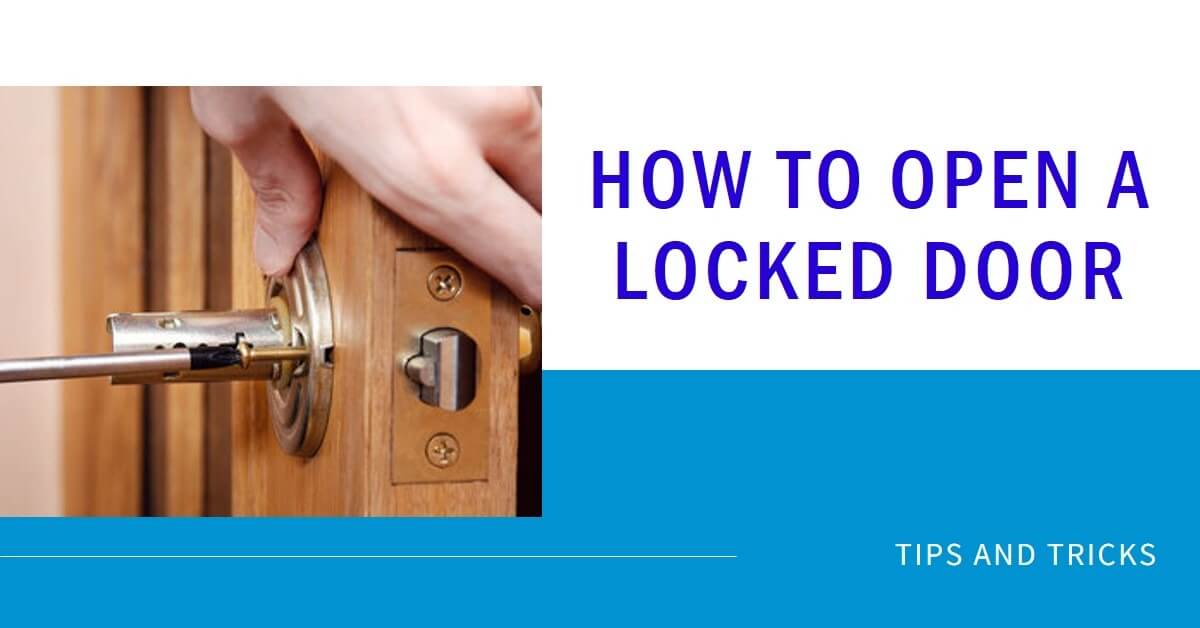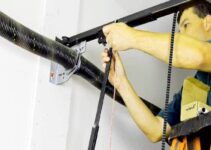Have you ever found yourself locked out of a room or a house with no key in sight? It can be a frustrating experience, but fear not!
In this article, we will explore various techniques to open a locked door and regain access to the other side. Whether you’re dealing with a stubborn interior door or a locked car, we’ve got you covered.
From traditional methods like using a bump key or a pick set to creative solutions like employing a hex wrench or even a credit card, we will walk you through step-by-step instructions on how to overcome these obstacles.
Understanding the Basics of Locks
Before we dive into the different techniques, it’s essential to have a basic understanding of how locks work. A lock typically consists of several components, including a keyway, pins, springs, and a cylinder.
When a key is inserted into the keyway and turned, the pins align at specific heights, allowing the cylinder to rotate and the lock to open.
Locks come in various types, such as pin tumbler locks, wafer locks, tubular locks, and more. Each type has its own mechanisms and requires different approaches for opening.
Familiarizing yourself with the type of lock you are dealing with will help you choose the appropriate unlocking technique.
Read Also:
How to Lock Garage Door Manually: A Comprehensive Guide
How to Open a Locked Door
Unlocking doors can be a tricky task, but armed with the right knowledge and techniques, you’ll be able to tackle any locked door situation. Here’s a step-by-step guide on how to open a locked door:

1. Using a Bump Key
A bump key is a specially crafted key that can manipulate pin tumbler locks. It takes advantage of the physics behind how pins react to pressure and vibrations. To use a bump key, follow these steps:
- Obtain a bump key that matches the type of lock you are trying to open.
- Insert the bump key into the lock.
- Apply slight pressure on the key while pulling it out one notch.
- Using a mallet or a similar tool, strike the bump key sharply.
- The force will cause the pins to jump momentarily, allowing the lock to turn.
It’s important to note that bump keys should only be used on locks you own or have permission to open. Using them for illegal purposes is strictly prohibited.
2. Using a Pick Set
A pick set consists of various tools that allow you to manually manipulate the pins inside a lock. With practice and patience, you can learn to “pick” a lock and unlock it without a key. Here’s how to use a pick set:
- Obtain a lock pick set with different hooks, diamonds, and tension wrenches.
- Insert the tension wrench into the bottom of the keyway and apply slight pressure in the direction you would turn the key.
- Insert the appropriate pick tool into the keyway above the tension wrench.
- Gently push the pins upward, one by one, feeling for resistance and clicks.
- Continue applying pressure with the tension wrench while manipulating the pins until all pins are set.
- Turn the tension wrench, and the lock should open.
Picking a lock requires skill and practice, so it’s advisable to learn the technique responsibly and for legal purposes only.
3. Using a Hex Wrench on an Interior Door
If you find yourself locked out of an interior door with a simple privacy lock, a hex wrench can be a handy tool. Follow these steps to unlock the door:
- Find a hex wrench that fits snugly into the small hole on the doorknob.
- Insert the hex wrench and apply gentle pressure in a twisting motion.
- While maintaining pressure, turn the wrench to simulate the unlocking motion.
- With a little persistence, the lock mechanism should disengage, allowing you to open the door.
Keep in mind that this method works on interior doors with privacy locks and may not be effective on more sophisticated locks.
4. Using a Credit Card
Believe it or not, a credit card can be a useful tool for opening certain types of locks. Please note that this method is primarily intended for educational purposes and should not be used for illegal activities. Here’s how you can give it a try:
- Select a flexible and sturdy card, such as an expired credit card or a plastic loyalty card.
- Insert the card between the door and the frame, above the latch.
- Hold the card perpendicular to the door and firmly push it in.
- Bend the card away from the doorknob to put pressure on the latch.
- While maintaining pressure, wiggle and twist the card to try and push the latch back.
- With some luck and persistence, the latch should retract, and you can open the door.
Remember, this method may not work on all types of locks, particularly those with deadbolts or more advanced security features.
5. Jimmying a Car Door
If you find yourself locked out of your car, you may be able to “jimmy” the door open using a few simple tools. Here’s how to proceed:
- Find a long, thin object that can fit between the door frame and the window, such as a wire hanger or a slim Jim tool.
- Insert the object between the door frame and the window, near the lock mechanism.
- Gently maneuver the object to reach the lock mechanism.
- Apply slight pressure or manipulate the mechanism to unlock the door.
- Once unlocked, pull the door handle from the outside, and you should regain access to your car.
It’s important to note that jimmying a car door should only be done for legitimate reasons, such as when you accidentally lock your keys inside the vehicle. Using these techniques for unlawful purposes is illegal and unethical.
6. Using Brute Force
When all else fails, and you have exhausted all other options, you may consider using brute force as a last resort.
However, it’s crucial to understand that resorting to forceful methods can damage the door or the lock beyond repair. Before attempting this method, consider seeking professional help or contacting a locksmith.
Read Also:
How to Program LiftMaster Keypad: Step-by-Step Guide
Conclusion
Being locked out of a room or a car can be a frustrating experience, but with the right knowledge and techniques, you can regain access quickly.
We’ve explored various methods, including using bump keys, pick sets, hex wrenches, credit cards, jimmying car doors, and the possibility of employing brute force.
Remember to always use these techniques responsibly and legally. If you’re unsure or lack the necessary skills, it’s best to consult a professional locksmith who can help you navigate these situations safely and efficiently.


